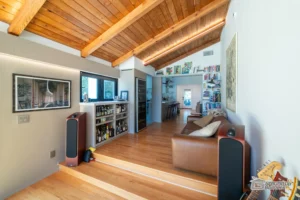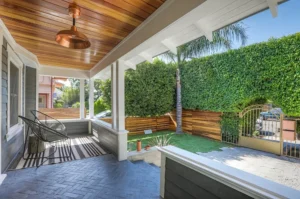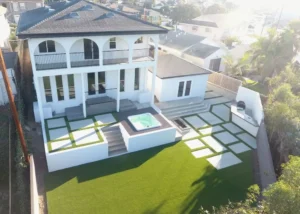So, you’re ready to build or remodel your dream home, and you want it to be stunning, comfortable, and kind to the planet. That’s a solid plan. As sustainable construction becomes more accessible and affordable, more homeowners are turning to eco-friendly building materials. Not only do these options support a healthier planet, but they can also improve your home’s energy efficiency and long-term value. And the best part? You don’t have to compromise on design or quality to go green.
Let’s walk through the world of sustainable materials and how to incorporate them into your next home construction project.
Why Sustainability Matters in Home Construction
Choosing sustainable materials isn’t just about checking an environmental box. It’s about building smarter. Sustainable homes are often better insulated, more durable, and healthier to live in thanks to reduced chemical emissions and better indoor air quality.
If you’re thinking about long-term costs (as any savvy homeowner should), green materials can also help lower energy bills and reduce maintenance headaches. And let’s be honest, there’s a certain pride in knowing your home is built responsibly, with minimal impact on the planet. Plus, it’s a conversation starter at your next backyard BBQ.
Eco-Friendly Insulation Options
Insulation is one of the first areas where sustainable choices make a big difference. While fiberglass is common, more eco-conscious alternatives are available and perform just as well, if not better.
Materials like sheep’s wool, cotton (yes, even recycled denim), and cellulose insulation offer excellent thermal performance and soundproofing while reducing environmental impact. These materials are often made from recycled or renewable sources and don’t carry the same health concerns as synthetic products.
Opting for proper insulation is also a great time to consider related upgrades, like energy-efficient windows and doors, which seal in comfort and keep your HVAC system from working overtime.
Reclaimed Wood and Engineered Products
Wood is a classic building material, but how it’s sourced makes a huge difference. Reclaimed wood, salvaged from old barns, warehouses, or even wine barrels, adds character and charm to any space while saving trees. Each piece tells a story and gives your home a unique look that’s hard to replicate.
Engineered wood products are also worth exploring. These include materials like cross-laminated timber and plywood made from sustainably harvested fast-growing trees. They often outperform traditional lumber in strength and versatility. Whether you’re installing new hardwood floors, building cabinetry, or framing walls, these options strike a great balance between sustainability and style.
If your renovation includes custom kitchen remodeling or flooring upgrades, these wood options can play a leading role in both form and function.
Low-Impact Concrete Alternatives
Concrete is strong, versatile, and unfortunately, one of the largest contributors to carbon emissions in construction. But all hope is not lost. Today, there are greener alternatives that provide the same strength with a smaller footprint.
Look for concrete mixes that incorporate fly ash, slag cement, or recycled aggregates. These materials reduce the need for virgin cement and repurpose industrial byproducts that would otherwise end up in landfills. For driveways, patios, or foundations, these innovations help reduce emissions while keeping durability top of mind.
You can also consider pervious concrete or permeable pavers for exterior hardscaping, which help with water drainage and reduce stormwater runoff, perfect if you’re planning a landscaping or hardscaping project as part of your home build.
Natural Interior Finishes That Shine
Your walls, countertops, and floors deserve the same green treatment. Paints and finishes often contain volatile organic compounds (VOCs), which can off-gas for years and affect indoor air quality. Opt for low- or zero-VOC paints and sealants that are healthier for your family and the environment.
Bamboo, cork, and linoleum (yes, the modern kind) are renewable and stylish flooring options. Natural stone, recycled glass, and composite materials also make for stunning countertops and backsplashes. Whether you’re updating your bathroom or designing an open-concept kitchen, these materials are proof that sustainability and beauty can go hand in hand.
While you’re selecting finishes, it’s a smart moment to think about bathroom remodeling or even room additions, a fresh start is the perfect opportunity to build consciously.
Solar and Energy-Efficient Systems
Alright, materials are important, but your home systems deserve a spotlight too. Installing solar panels, energy-efficient HVAC systems, or radiant floor heating can dramatically reduce your carbon footprint and monthly energy bills. When paired with sustainable building materials, these systems round out your eco-conscious home and increase its value over time.
Smart thermostats, tankless water heaters, and LED lighting might not seem like a big deal individually, but together they contribute to a more efficient and environmentally friendly living space. Not to mention, they’re features that savvy homebuyers are increasingly looking for.
If you’re already planning new construction, this is the best time to integrate these energy-saving elements from the ground up.
Build with Purpose
Going green isn’t about jumping on a trend. It’s about building a home that respects your values, performs efficiently, and stands the test of time. With so many high-quality sustainable materials available, you don’t have to choose between luxury and responsibility.
Whether you’re building from scratch or planning a large-scale renovation, make sure sustainability is part of the conversation from day one. Every tile, board, and light fixture is a chance to create a home that’s good for both your family and the planet.
If you’re ready to design with purpose, contact us. Whether you’re considering a custom kitchen, a bathroom remodel, or a full new build, expert guidance can help turn your vision into a beautifully sustainable reality.




